Natural vs Synthetic Gemstones
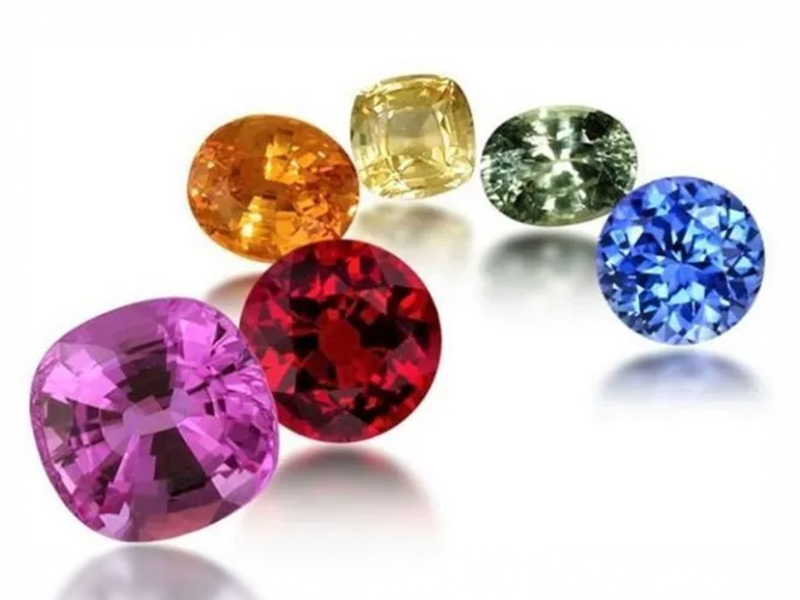
Natural vs Synthetic Gemstones
What’s the Difference?
Natural gemstones are those formed by nature without human involvement, over the years. Gemstones are of two types; Organic and Inorganic. Organic gemstones are produced by living organisms such as Pearl, Amber, Ivory and Coral. Inorganic Gemstones are minerals formed within earth under natural conditions such as Diamonds, Sapphire, Rubies and Emeralds. Most of the gemstones are Inorganic.
Synthetic gemstones sometimes called man-made, lab-made, lab-created, cultivated or cultured gemstones, get their name because they are produced in laboratories. These labs use advanced techniques to recreate in a controlled setting the time, pressure, and temperature on carbon and different elements to produce different types of gemstones. What is the most interesting about synthetic stones is that scientifically, they are chemically identical in properties to the gemstones that are found in the Earth.
Since they have an identical mineral composition, it is difficult for someone without the correct equipment and training to tell a real and a synthetic gemstone apart just by looking. While these differences are invisible to the naked eye, professional laboratories have tests to identify even synthetic diamonds versus natural mined diamonds.
Although it is hard to tell the difference without a microscope between a lab-created gemstone and a natural gemstone, there is one thing you could look for. Synthetic gemstones are more likely to be rich and vivid in color, and are virtually inclusion or blemish-free when you look at them. Almost always, natural gemstones will have some type of inclusion or color differentiation.
Knowing what you are purchasing is important. It is first important to determine if your gemstone is natural or synthetic. Gemstones that are easily created like rubies or sapphires are significantly lower priced than the natural gemstones. A 6mm round natural blue sapphire would cost $650. A lab-grown blue sapphire would cost $6. So, the natural stone is over than 100 times more valuable than the lab-grown one.
As a buyer, you have the right to know whether you are purchasing a natural or a synthesized gemstone. With Prestige Gems, you will never have to worry about a gemstone’s authenticity, as we disclose all information about a gemstone’s origin, treatments and any other relevant information.
5 Shocking Truths: Natural vs Synthetic Gemstones
In the dazzling world of jewelry, where brilliance and beauty reign supreme, a critical question often arises for both new buyers and seasoned collectors: what is the real story behind natural vs synthetic gemstones? As Sri Lanka, the revered “Island of Gems,” continues to share its natural treasures with the world, understanding this distinction has never been more important. This is not merely a matter of preference; it’s a complex topic that touches upon value, rarity, science, and the very essence of what makes a gemstone precious. This definitive guide will illuminate the fundamental differences, expose common misconceptions, and empower you with the knowledge to confidently choose a gem that aligns with your desires and values.
Table of Contents
- Defining the Contenders: What Are Natural Gemstones?
- The Artistry of Mother Nature
- Sri Lanka’s Geological Gift
- The Challenger Emerges: What Are Synthetic Gemstones?
- A Marvel of Human Ingenuity
- Common Methods of Gem Synthesis
- The Ultimate Showdown: Key Differences in the Natural vs Synthetic Gemstones Debate
- Formation and Provenance: Earth’s Legacy vs. Lab’s Blueprint
- Inclusions as Nature’s Fingerprints: A Crucial Clue in the Natural vs Synthetic Gemstones Comparison
- Color and Clarity: Evaluating the Nuances Between Natural vs Synthetic Gemstones
- Value, Rarity, and Investment: The Financial Divide
- Ethical and Environmental Considerations
- The Gemologist’s Eye: How Experts Distinguish Between Natural vs Synthetic Gemstones
- The Power of Magnification
- Advanced Gemological Testing
- Why Choose Natural Gemstones? The Enduring Case for Authenticity and Value
- The Romance of a Billion-Year Journey
- A Tangible Investment
- Frequently Asked Questions (FAQs) about Natural vs Synthetic Gemstones
- Conclusion: Making an Informed and Cherished Choice
1. Defining the Contenders: What Are Natural Gemstones?
A natural gemstone is a mineral crystal that has been formed by natural geological processes over immense spans of time, often millions or even billions of years. These are the true treasures of the Earth, mined from the ground where they have rested for eons.
The Artistry of Mother Nature
The creation of a natural gemstone is a serendipitous and often tumultuous event. It requires a specific cocktail of elements, combined with unimaginable heat and pressure deep within the Earth’s crust. For instance, the coveted blue sapphire, a variety of the mineral corundum, forms when aluminum and oxygen atoms crystallize under these intense conditions, with trace amounts of iron and titanium imparting its signature blue hue.
The journey of a natural gem is long and arduous. After its formation, it may be brought closer to the surface through volcanic activity or the slow shifting of tectonic plates. Over millennia, weathering and erosion free these crystals from their host rock, carrying them into rivers and streams where they are deposited in alluvial gravel beds. It is from these deposits that many of the world’s finest gems are found. Each natural stone is, therefore, a unique survivor—a small, beautiful relic of our planet’s chaotic and powerful history.
Sri Lanka’s Geological Gift
Sri Lanka holds a privileged place in the world of natural gemstones. The island’s ancient geology has created a veritable treasure chest, making it one of the most important sources for a wide array of gems. The Ceylon Sapphire, with its distinctive, vibrant cornflower blue, is world-renowned. In addition, the country is famous for its rubies, chrysoberyl cat’s eyes, alexandrites, spinels, and garnets. The traditional, small-scale mining methods practiced here for centuries are a testament to a culture that reveres these gifts from the earth.
2. The Challenger Emerges: What Are Synthetic Gemstones?
It is crucial to understand that a synthetic gemstone is not a “fake” stone in the way glass or plastic is. A synthetic, or lab-created, gemstone is a man-made material that mirrors its natural counterpart in every essential way. It has the exact same chemical composition, crystal structure, and optical properties. In essence, a synthetic sapphire is a real sapphire; it just wasn’t made by nature.
A Marvel of Human Ingenuity
The quest to create gemstones in a laboratory began in the late 19th century. French chemist Auguste Verneuil was the first to develop a commercially successful method for creating synthetic rubies. His “flame fusion” process is still used today. Since then, scientific advancements have led to the creation of a vast array of synthetic gems, including emeralds, alexandrites, and diamonds, that can be incredibly difficult to distinguish from natural stones.
The goal of synthesis is to replicate the natural growth process but in a controlled environment and on an accelerated timeline. While nature takes millions of years, a lab can produce a large, high-quality crystal in a matter of weeks or months.
Common Methods of Gem Synthesis
Several sophisticated techniques are used to create synthetic gems today:
- Flame Fusion: This method, developed by Verneuil, involves dropping powdered chemicals through a high-temperature flame, where they melt and crystallize on a rotating pedestal below. It is a fast and inexpensive method, primarily used for producing synthetic corundum (sapphire and ruby) and spinel.
- Flux Growth: In this process, the chemical components of the gem are dissolved in a heated solution called a “flux.” As the solution cools very slowly over a long period, crystals begin to form. This method is slower and more expensive but can produce very high-quality synthetic gems, including emeralds and alexandrites, that closely mimic the appearance of natural stones.
- Hydrothermal Growth: This technique simulates the conditions deep within the Earth. A nutrient-rich solution is placed in a high-pressure autoclave and heated, allowing crystals to grow on a seed plate. This is the primary method used to synthesize high-quality quartz and emeralds.
3. The Ultimate Showdown: Key Differences in the Natural vs Synthetic Gemstones Debate
While chemically identical, there are profound and identifiable differences between natural and lab-grown stones. Understanding these distinctions is the key to making an informed purchase.
Formation and Provenance: Earth’s Legacy vs. Lab’s Blueprint
The most fundamental difference lies in their origin, or provenance. A natural gem carries with it a history as old as the mountains. It is a finite, non-renewable resource, and its journey from the Earth’s mantle to your hand is a story of geological wonder. Its value is intrinsically tied to its rarity and this natural legacy.
A synthetic gem, in contrast, has no such history. It is a product of technology, created in a controlled and repeatable process. It can be mass-produced, and its supply is limited only by manufacturing capacity. Consequently, it lacks the rarity and the romantic narrative of a natural stone.
Inclusions as Nature’s Fingerprints: A Crucial Clue in the Natural vs Synthetic Gemstones Comparison
In the world of gemology, flaws can be beautiful. Inclusions are tiny internal characteristics found within a gemstone. In natural stones, these can be other mineral crystals, tiny fractures, or pockets of liquid that were trapped during the gem’s violent formation. These inclusions are nature’s unique fingerprints. A trained gemologist can often identify a gem’s origin based on the type of inclusions it contains. For example, fine, needle-like “silk” inclusions are characteristic of some sapphires.
Synthetic gems, on the other hand, are typically much cleaner or “flawless.” However, they are not always perfect. The creation process can leave its own telltale signs. These might include microscopic gas bubbles arranged in curved patterns (common in flame-fusion synthetics) or remnants of the metallic flux used during their growth. Therefore, the presence and nature of inclusions are one of the most reliable ways to differentiate between natural and synthetic gems.
Color and Clarity: Evaluating the Nuances Between Natural vs Synthetic Gemstones
Because lab-created gems are grown in a sterile, controlled environment, their color is often remarkably uniform and highly saturated—sometimes appearing almost too perfect. Natural gemstones, however, often exhibit color zoning, where the color is unevenly distributed in distinct bands or patches, reflecting the changing conditions during their long growth period.
Similarly, the clarity of a synthetic stone is often exceptional, far exceeding what is typically found in nature for an equivalent price. While a large, internally flawless natural sapphire is an extraordinary and astronomically expensive rarity, a large, flawless synthetic sapphire is commonplace.
Value, Rarity, and Investment: The Financial Divide
This is perhaps the most critical distinction for any buyer. Natural gemstones are rare, and their value reflects that scarcity. A high-quality natural sapphire, ruby, or emerald is a significant store of value and can be considered a tangible investment that appreciates over time. They are heirlooms passed down through generations.
Synthetic gemstones have little to no resale value. Their price is tied to the cost of production, which has steadily decreased with technological improvements. While they can be a beautiful and affordable alternative for fashion jewelry, they should never be considered an investment. A one-carat synthetic sapphire might cost a fraction of the price of a one-carat natural sapphire of similar quality, but the natural stone holds its value while the synthetic one does not.
Ethical and Environmental Considerations
The debate over natural vs synthetic gemstones also has an ethical dimension. Mining for natural gems can have a significant environmental impact and, in some parts of the world, is associated with poor labor practices. However, it’s also a vital source of income for millions of people in developing nations, including Sri Lanka, where the industry is dominated by small-scale, artisanal mines that support entire communities.
Conversely, while lab-grown gems avoid the environmental disruption of mining, their creation is an energy-intensive process that carries its own carbon footprint. Ultimately, the ethical choice depends on a buyer’s priorities and their ability to purchase from a transparent and responsible source that can vouch for a gem’s origin.
4. The Gemologist’s Eye: How Experts Distinguish Between Natural vs Synthetic Gemstones
While some synthetic gems can fool the untrained eye, a qualified gemologist has an arsenal of tools and techniques to make a definitive identification. This is why certification from a reputable lab is so important.
The Power of Magnification
The single most important tool for a gemologist is a microscope or a 10x jeweler’s loupe. Careful examination under magnification reveals the internal world of the gem—its inclusions. As discussed, the type of inclusions (or lack thereof) provides the strongest clues. Curved striae (growth lines) and gas bubbles strongly suggest a synthetic origin, while natural mineral crystals and healed fractures point to a natural stone.
Advanced Gemological Testing
For more challenging identifications, gemologists turn to advanced equipment. A refractometer measures how light bends as it passes through the gemstone (its refractive index), which helps confirm the gem’s identity. A spectroscope analyzes how the gem absorbs light, revealing patterns that can differ between natural and synthetic stones due to the presence of certain trace elements. Authoritative bodies like the Gemological Institute of America (GIA) use even more sophisticated technology, including advanced chemical analysis and spectroscopy, to provide conclusive reports on a gem’s origin. You can also learn more about the basic properties on sites like Wikipedia.
5. Why Choose Natural Gemstones? The Enduring Case for Authenticity and Value
In a world filled with replicas and reproductions, there is a powerful allure to owning something genuinely real and rare.
The Romance of a Billion-Year Journey
A natural gemstone is more than just a collection of atoms; it is a piece of the planet’s history. It connects us to the immense forces of nature and the passage of geological time. Each stone has a unique character, a personality shaped by its incredible journey. This intrinsic romance and individuality are something a mass-produced, lab-grown stone can never replicate.
A Tangible Investment
From a practical standpoint, choosing a natural gemstone is a wise financial decision. They are a hard asset with enduring value. While market prices fluctuate, the demand for rare, high-quality natural gems has remained strong for centuries and continues to grow. When you purchase a certified natural gemstone, you are acquiring an asset that can be treasured for a lifetime and passed on as a valuable inheritance. For those seeking authentic, certified natural gems from the heart of Sri Lanka, exploring a curated collection from a trusted source is paramount. At Prestige Gems Store, we are committed to transparency and quality, ensuring every gem we offer is a genuine treasure from the earth.
6. Frequently Asked Questions (FAQs) about Natural vs Synthetic Gemstones
1. What is the main difference in the natural vs synthetic gemstones debate? The primary difference is their origin. Natural gemstones are formed by geological processes within the Earth over millions of years and are mined from the ground. Synthetic gemstones are created in a laboratory but have the same chemical and physical properties as their natural counterparts.
2. Are synthetic gemstones considered “fake”? No. “Fake” implies imitation, like glass or plastic made to look like a gem. A synthetic is a real gemstone, just man-made. The correct term is “synthetic” or “lab-created.” The issue arises only when they are sold deceptively as natural stones.
3. Can I see the difference between natural vs synthetic gemstones with my naked eye? In most cases, it is extremely difficult, if not impossible, for an untrained person to tell the difference. Synthetics are often made to look “too perfect,” which can be a clue, but a definitive identification requires examination by a trained gemologist using magnification and other testing equipment.
4. From an investment perspective, which is better: natural vs synthetic gemstones? Without question, natural gemstones are the only choice for an investment. Their value is based on their rarity, a quality that lab-created stones, which can be produced in unlimited quantities, do not possess. Natural gems hold and appreciate in value, while synthetics have little to no resale value.
5. How does Prestige Gems Store guarantee the authenticity of its natural gemstones? We guarantee authenticity by providing independent gemological certificates from recognized laboratories for our significant gemstones. This certification confirms the stone’s identity, characteristics, and, most importantly, its natural origin, giving our customers complete confidence and peace of mind in their purchase.
7. Conclusion: Making an Informed and Cherished Choice
The debate over natural vs synthetic gemstones is not about good versus bad, but about understanding the profound differences in their origin, rarity, and value. Synthetic gems offer an accessible way to enjoy the beauty of a stone’s color and brilliance. However, they cannot capture the soul, the history, or the enduring value of a natural gem.
A natural gemstone is a miracle of nature, a unique piece of art forged by the planet itself. It represents permanence, rarity, and a tangible link to the Earth’s ancient past. When you choose a natural stone, especially one from a storied source like Sri Lanka, you are not just buying a piece of jewelry; you are becoming the custodian of a timeless treasure. We encourage you to embrace the beauty of authenticity and invest in a legacy that will last for generations to come.




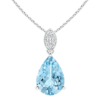
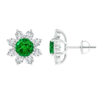



 Ladies Rings
Ladies Rings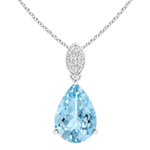 Pendants
Pendants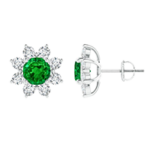 Earrings
Earrings Gent’s rings
Gent’s rings